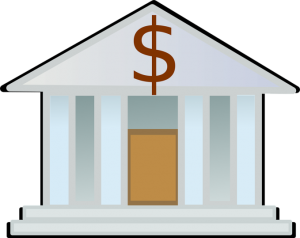
The Times They Are A’changing … Be Alert, Diligent & Proactive

In January of this year, I predicted that 2018 will be the year of promise for landlords. My core foundation was, and remains, based on the facts that:
- Employment & Wages Are Up;
- Taxes Are Down; plus a
- Brand New, Major Tax Break for Residential Rental Investors
Read
my original article here.
As we approach the end of the first quarter of 2018,
the above still points to “all good” news for Virginia residential rental investors!
That said, good news does not mean residential rental investors should remain complacent, or worse, unaware of the changes in the marketplace that may affect your current investment properties or the potential to expand your portfolio.
Among the considerations for landlords … interest rates are rising and likely to continue to do so as a function of wage-inflation increases and unemployment decreases. We’ve already seen a move by the Fed in that direction. So there are some actions when playing both defense and offense that need to be part of your investor playbook.

Single Family Home Investment Properties
Owner-Occupied Trend: Owner-occupied single family homes are on the increase. With improved employment opportunities and a sense of comfort with how the economy is panning out, tenants with good credit are buying entry-level homes rather than renting.
The net result for residential rental investors is:
- Less inventory to purchase;
- Available inventory is often less desirable;
- Difficult to justify bumping rents on good tenants who then may be motivated to buy;
- Riskier this year than last to replace good tenants.

Potential to Recapitalize
Recapitalization presents an efficient way to invest in residential rental properties. Before interest rates move any further North, this is a good time to examine the advantages to recapitalize. That means the potential to
take advantage of low-interest rate, long term money to finance long term capital expenditures.
Said another way, recapitalization will free up equity to reinvest in your residential real estate and enhance both current rents and longer term value of your asset.
The basic principles remain the same for single family homes as well as multi-family properties. Recapitalizing often results in the ability to update properties in some or all of the following ways:
- Painting the building(s)
- Resurfacing parking lots
- Installing new hardwood flooring or carpeting
- New appliances and countertops
- Longer-life LED light fixtures
- Addition of community and/or health facilities
These are long-term capital improvements offering value that enhances rents, good-tenant attraction and retention plus superior occupancy rates.
Again, taking advantage of the current low, but rising, interest rate environment may deliver a number of advantages. For example, let’s say you have a single family rental in need of a new roof. You could finance the replacement over a 3 to 5 year period, but at a monthly repayment far higher than if you refinanced the property, and your new roof, over 20 or 30 years.
The net result could be:
- An investment property improvement with a life expectancy of 20 to 25 years.
- Possible reduction in debt service.
- Increased tax deduction for mortgage interest.
- Potential for additional tax relief based on new tax law.
Recapitalization of multi-family properties may serve another dimension as it relates to ownership. When more than one investor is involved, there may be a difference in investment timelines for each party.
For example, an investor may want to cash out in a compressed time frame. Alternatively, another may seek to retain ownership over the long term to enjoy the benefits of cash flow and appreciation of the asset value of the property. Recapitalizing is often the vehicle that delivers on both objectives.

Summary
Given the current interest rate environment, loan money is relatively cheap. That is changing and likely will continue to change over time. So now is the time to explore how you can profit from a set of financing settings that may not prove repeatable for decades.
Of course, your circumstances will determine the relative benefits of recapitalizing. At the very least, it’s well worth your time to investigate your options and make an informed decision. Here are a couple of resources to help you in that quest.

 In January of this year, I predicted that 2018 will be the year of promise for landlords. My core foundation was, and remains, based on the facts that:
In January of this year, I predicted that 2018 will be the year of promise for landlords. My core foundation was, and remains, based on the facts that:









